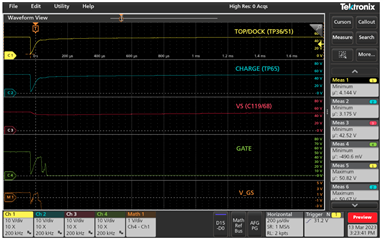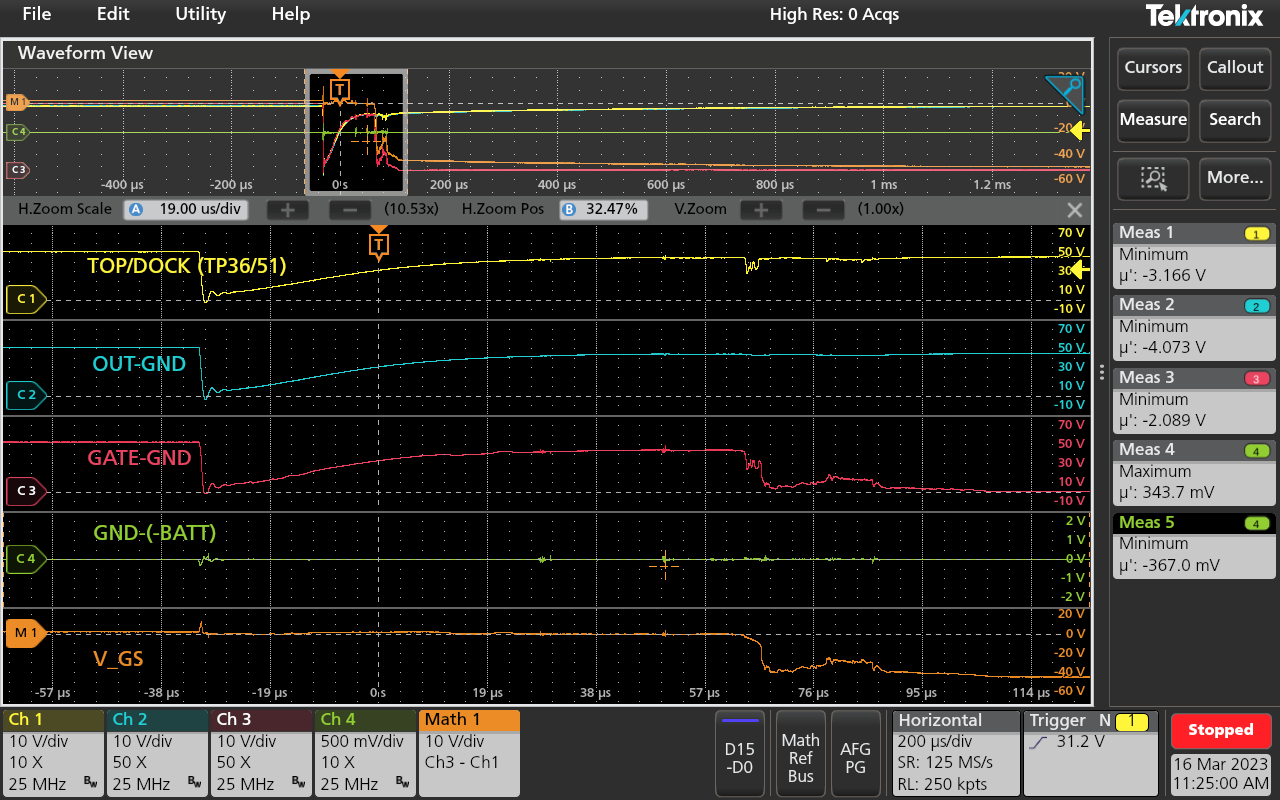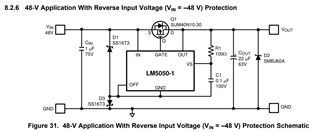Good day!
I experience high failure rates of the LM5050MK-1/NOPB driver IC and the ideal diode circuit it is used in.
The failure mode is the following:
- The gate driver IC fails short between GATE pin and GND pin
- The MOSFET gate source voltage exceeds its rating (because GATE is at GND, while SOURCE is at 50V)
- The MOSFET fails into a short between all pins
- The ideal diode does not block anymore in reverse direction
- The ideal diode has the MOSFET body diode drop in forward direction
I managed to capture the following waveforms during a failure:

The following channels are used:
Channel 1 (yellow): IN pin of the gate driver, source of the MOSFET
Channel 2 (blue): OUT pin of the gate driver, drain of the MOSFET
Channel 3 (red): VS pin of the gate driver
Channel 4 (green): GATE pin of the gate driver
Math (orange): GATE-IN= gate-source voltage
The following events/transients occur:
Initially, the circuit is supplied with 50V and there is basically zero load at the output side of the ideal diode circuit. There is a total capacitance of around 10uF.
Then a MOSFET connected to the output (OUT-pin) turns on to charge a large capacitive load (~60uF).
The load jump causes the voltage at the IN and OUT pins of the gate driver to fall abruptly.
The supply voltage at the VS pin remains high as there is a bypass capacitor and filter resistor present.
The IN and OUT voltages recover as the source for the circuit charges up the additional load capacitance.
However, the GATE voltage of the IC doesn't fully recover but falls to GND instead (failure of the driver IC). This kills the MOSFET.
I measured the following min./max. voltages with the oscilloscope:
IN-pin: min 4.144V, max 50.83V
OUT-pin: min 3.175V, max 50.69V
VS-pin: min 42.52V, max 50.8V
GATE-pin: min -490.6mV, max 52.72V
Based on the waveforms and minimum and maximum voltages, it is not clear to me why the IC dies.
What is the most likely cause for the failure?
Possible causes that I can think of are:
- Negative voltage at the gate pin
- negative voltage at another pin that is not captured by the scope
- high dv/dt
- high differential votlage between VS pin and IN/OUT pin
What do you think kills the IC?
Thanks for you help!
Manuel





